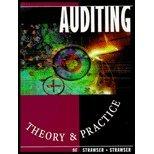Question
Which of the following represent the three major influences on pricing decisions? a. customers, competitors, and costs. b. controls, customer, and competitors. c. costs, competitors,
Which of the following represent the three major influences on pricing decisions?
| a. | customers, competitors, and costs. |
| b. | controls, customer, and competitors. |
| c. | costs, competitors, and controls. |
| d. | costs, controls, and customers.
|
b. Sebastian Enterprises sells a product for $25 per unit and has the following costs for the product
| Direct Materials | $10 |
| Direct Labor | 5 |
| Variable Overhead | 3 |
| Fixed Overhead | 2 |
| Total | $20 |
The company received a special order for 100 units of the product. The order would require rental of a special tool which costs $200. What is the minimum price per unit that Sebastian Enterprises should charge for this special order if they wish to earn a $300 profit on this order? Assume there is sufficient idle capacity to accept this order.
| a. | $18 |
| b. | $20 |
| c. | $23 |
| d. | $25 |
c. In considering a special order that will enable a company to make use of presently idle capacity, which of the following costs would be irrelevant?
| a. | Materials |
| b. | Depreciation |
| c. | Direct Labor |
| d. | Variable Overhead |
d. Which of the following is an operation in which the work to be performed equals or exceed the available capacity?
| a. | capacity inhibitor. |
| b. | throughput blocker. |
| c. | bottleneck. |
| d. | push-pull constraint. |
Step by Step Solution
There are 3 Steps involved in it
Step: 1

Get Instant Access to Expert-Tailored Solutions
See step-by-step solutions with expert insights and AI powered tools for academic success
Step: 2

Step: 3

Ace Your Homework with AI
Get the answers you need in no time with our AI-driven, step-by-step assistance
Get Started


